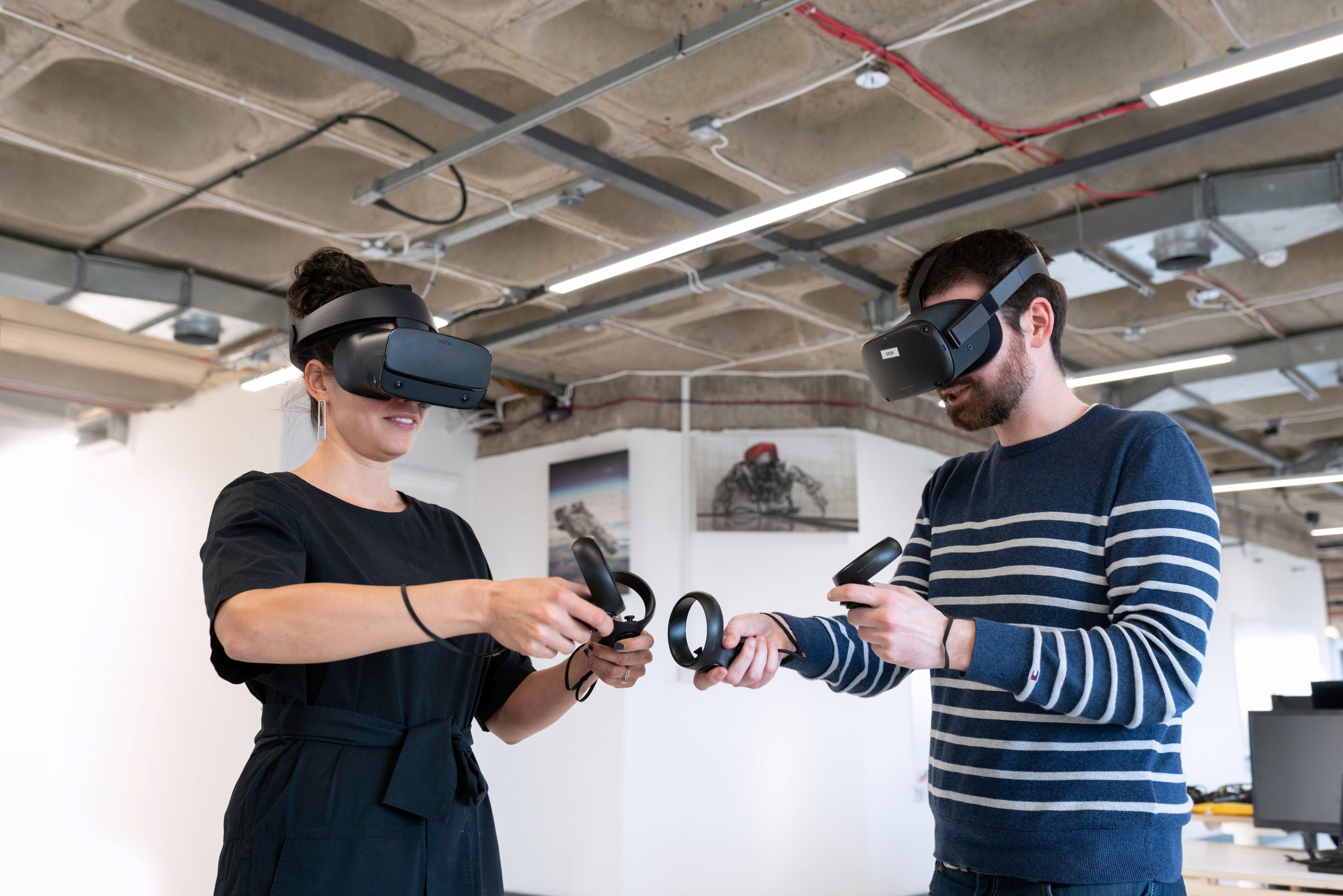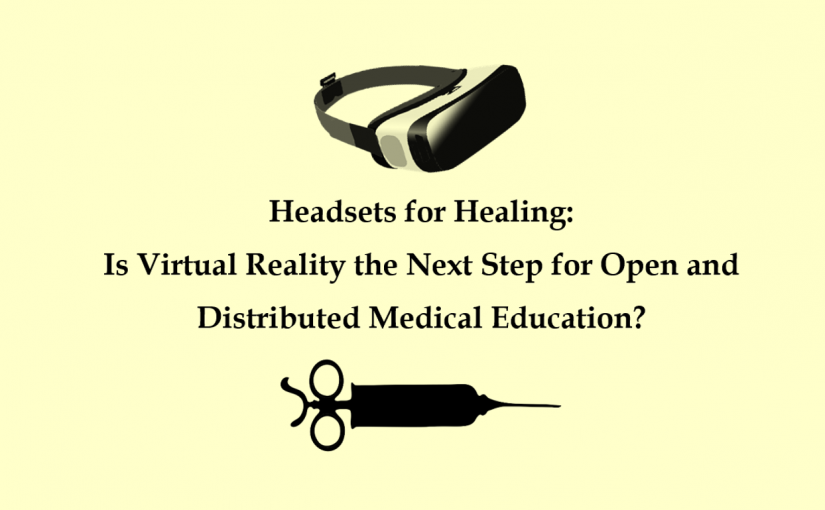Within the context of open and distributed learning, VR is mostly used asynchronously with student-interface and student-content interactions. Educational forms of interaction are described in Chapter 5 of Creating Online Learning Experiences by Matt Crosslin. As the learner interacts with the multidimensional, computerized platform, they are engaging directly with the VR interface. As they do so, learners are simultaneously interacting with educational content and acquiring new skills. These learner interactions are “observable”; the interactions include overt actions and can be assessed by an instructor. VR also offers “multiplayer” simulations if learners choose to come together to enhance their learning experience. This is one way to achieve synchronous student-student interactions through VR. VR can also be used for synchronous student-teacher interactions if the teacher communicates with the learner during the simulation. Live communication can be achieved by using the VR headset’s microphone and auditory features.

Navigation
- Introduction
- How is VR Currently Used in Medical Education?
- Students
- Ease of Use
- Cost
- Teaching
- Interaction
- Organizational Issues
- Novelty and Networking
- Security and Privacy
- Conclusion and Question
- References and Attribution
License
This work is licensed under Creative Commons (CC) Attribution 4.0 International

